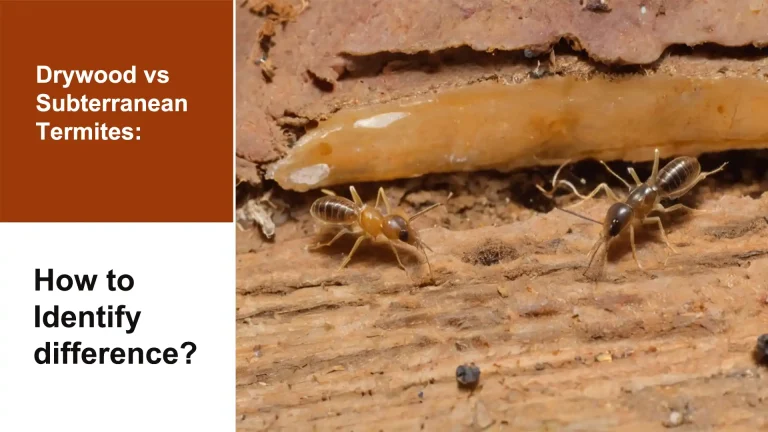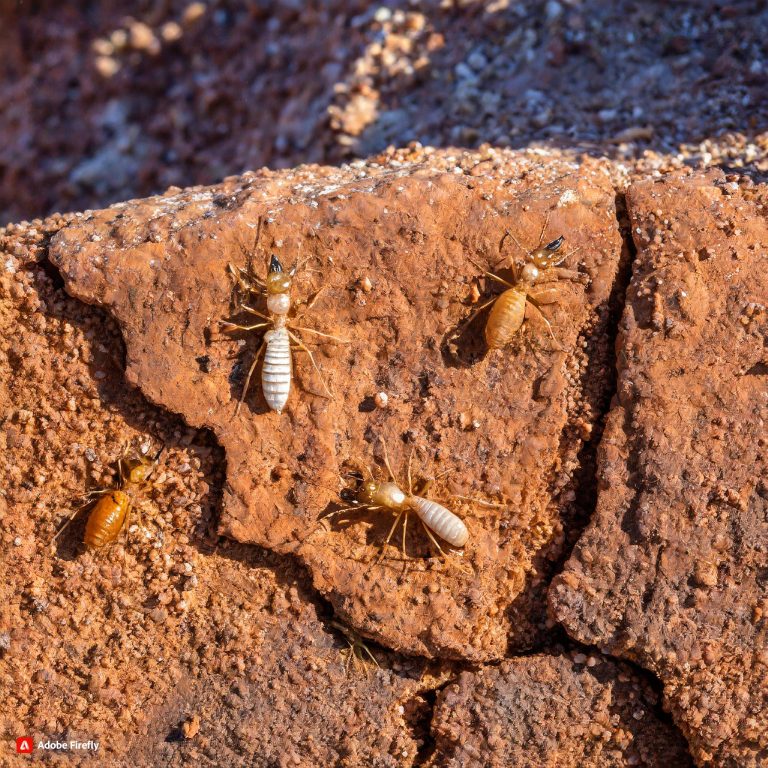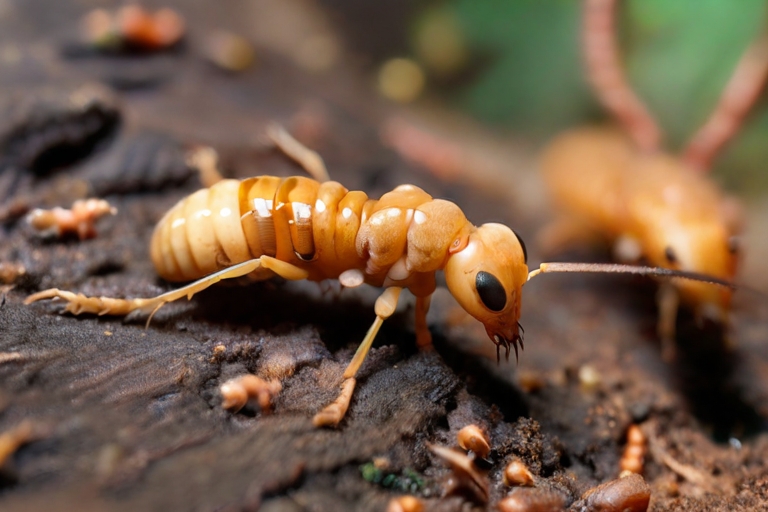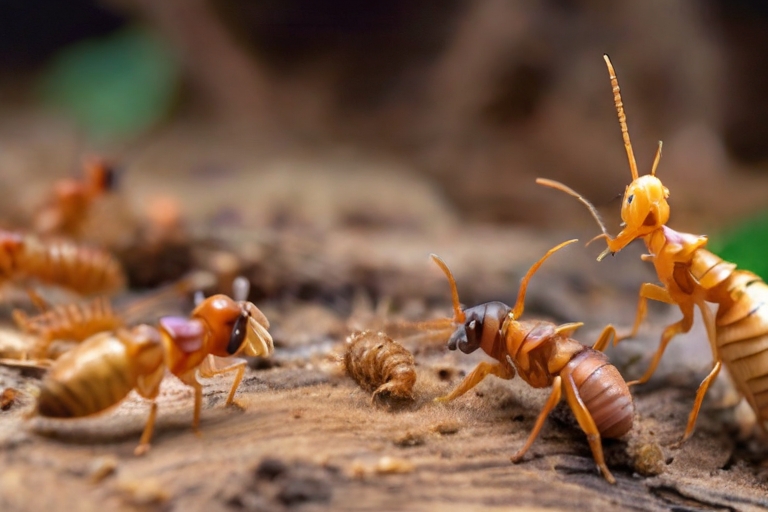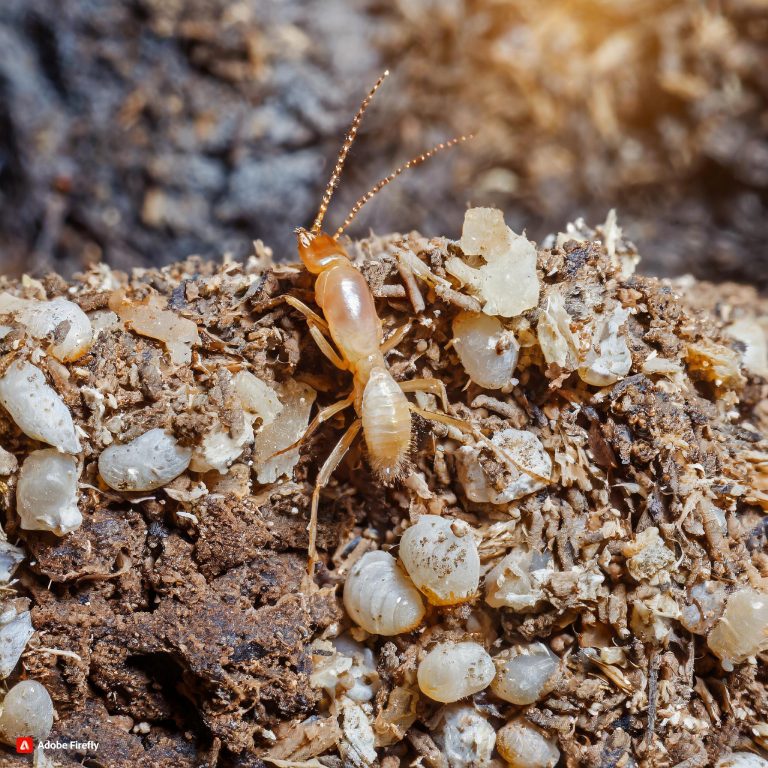Types of Termites in Texas: Identification Guide 2024
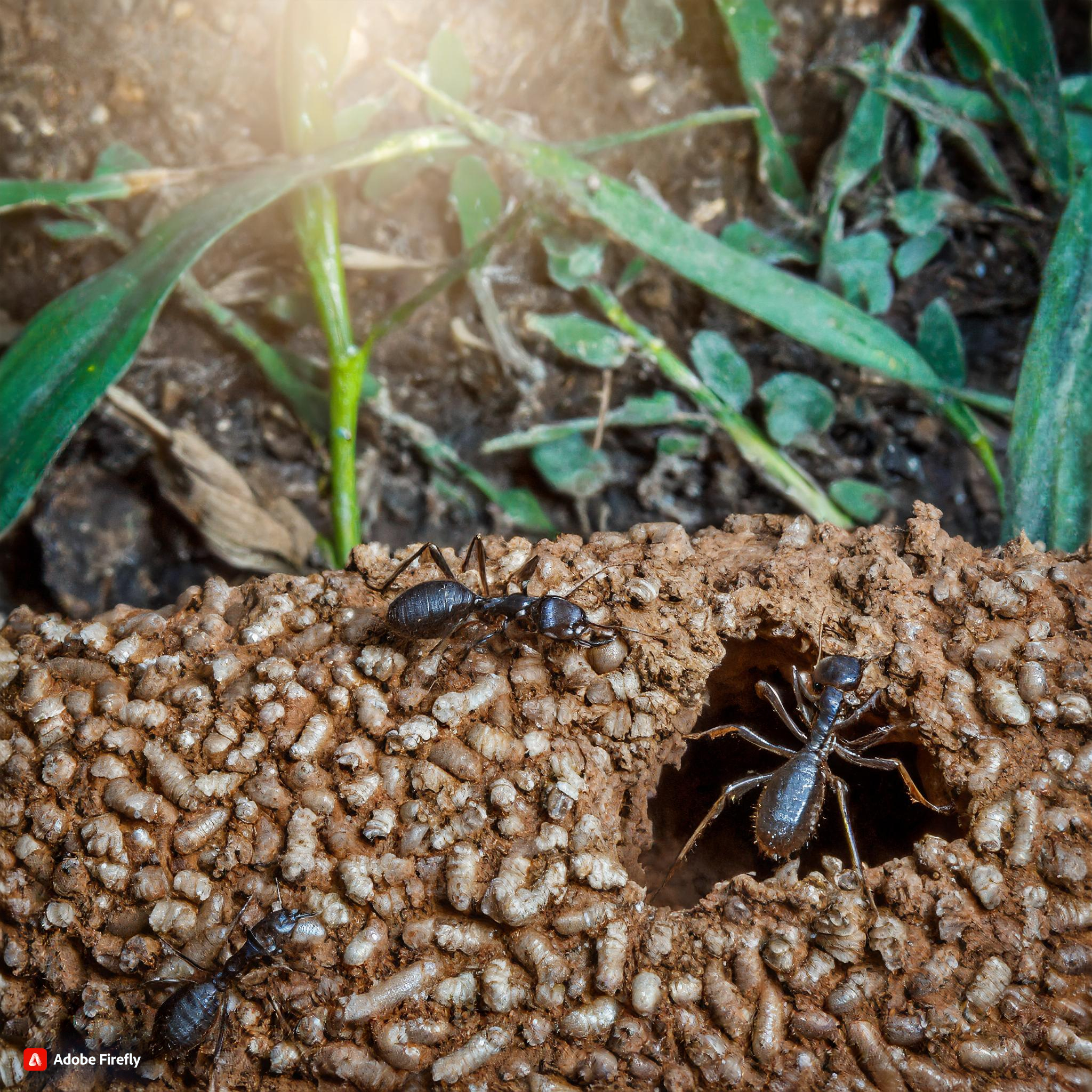
Texas is home to a few different species of termites that can cause major damage if left unchecked. Knowing how to identify these pests is key to protecting your home. This guide covers the main types of termites in Texas, signs of an infestation, and how to get rid of them.
Termites in Texas
Termites are a major pest in Texas. The state’s warm climate, abundant food supply, and conducive nesting conditions make it a perfect location for several termite species to thrive.
These destructive pests can chew through cellulose material to build their nests and get nutrition. Termites in Texas feed on wood from trees; structures like homes, fences, and telephone poles; as well as paper, books, and even drywall. Their colonies work quickly and can seriously compromise the structural integrity of a building. The Formosan termite in particular is considered the most destructive termite species globally.
Signs of a Termite Infestation
Detecting termites early is crucial to prevent extensive damage. Here are some of the most common signs of termites in Texas homes and properties:
- Hollow sounding wood
- Mud tubes along foundations or wooden structures
- Discarded wings around windowsills or swarming inside
- Cracked paint or wallpaper
- Sagging doors or floors
If you spot these termite signs, get a professional inspection right away. The longer an infestation goes untreated, the costlier it will be to repair the destruction.
3 Most Common Types of Termites in Texas
While there are a few different termite species throughout the state, three main types are responsible for the majority of damage in Texas:
1. Formosan Subterranean Termites
- Scientific name: Coptotermes formosanus
- Native to China but invasive across Southern states
- Considered most destructive termite species globally
- Colonies have up to 10 million termites making termite control very difficult
- Nest underground and create mud tubes to food sources
- Cause $1 billion in property damage annually by termites swarm and spreading to nearby structures causing severe termite damage
The Formosan subterranean termite is often called the “super termite” due to its rapid colony growth and tremendous appetite. It is now the most common species in Texas, especially prevalent in the southeastern coastal region.
2. Southeastern Drywood Termites
- Scientific name: Incisitermes snyderi
- Found across Southern coastal plains into Texas
- Colonize and nest inside wooden structures vs underground
- Swarm spring through fall, often infesting attics and wall voids
- Don’t require ground contact so can access furniture, beams, etc.
- Cause significant structural damage once inside as their drywood termite colonies expand
Southeastern drywood termites live up to their name – they love nesting in seasoned, dry wood. Homes, barns, sheds, and other buildings provide the perfect dry, protected habitat. Their colonies can grow unchecked since they don’t need soil access.
3. Dampwood Termites
- Scientic name: Zootermopsis species
- Prefer moist, decaying wood to nest and feed
- Common in coastal woodlands with high humidity
- Colonies smaller than subterranean varieties
- Damages wooden fences posts, exterior sidings and trims
- Help decompose dead/rotting trees back into soil
As their name suggests, dampwood termites thrive in wet, rotting wood often found in forests or woodlands. Their presence indicates overly moist conditions conducive to fungal growth and structural decay.
Termites with Wings in Texas
Seeing winged insects emerging inside or swarming outside your home can be the first clue to uncover a termite infestation. Termites develop wings for their mating/reproductive stage. After swarming, they shed their wings and attempt to start a new colony.
Swarming seasons vary slightly based on climate, but typically happen on warm days from spring through early fall. If you spot winged termites, look closely to try and identify the species. Their distinguishing wings features help pinpoint the type infesting your property.
You may also find discarded termite wings on windowsills and spider webs. Save samples of any wings or termites you find to share with pest control pros. Proper identification ensures the best treatment plan for complete elimination.
Termite Activity in Texas
Termite behavior relates closely to temperature and seasonal conditions across different Texas regions:
- Early spring swarming common as temps warm
- Peak activity in hot, humid summer months
- Coastal areas see year-round subterranean termite activity
- Drywood termites quiet over winter months
- Warm indoor conditions support colony growth/damage
Termites need warmth to stay alive and active. Subterranean species overwinter below the frost line, while drywood termites slow down in colder months.
But the mild winters of coastal and southern Texas enable nearly year-round feeding. And central heating allows household infestations to persevere through winter almost anywhere in the state.
What Causes Termite Infestations
Termites aren’t picky about nesting spots. Given a food source, moisture, and adequate warmth, they will happily take up residence inside manmade structures as well as outdoor wooded areas.
Several factors can attract termites and spur an infestation:
- Wood debris piled against structures
- Direct soil to wood contact under homes or porches
- Leaking pipes, gutters, roofs, or appliances
- Overflowing flower beds, planters, fountains, etc.
- Poor drainage near foundations
- Wood rot from moisture damage
- Nearby mulch or woodpiles against buildings
Making a few adjustments can discourage termite activity around your home:
- Remove all wood debris and form ground barriers
- Prune branches touching structures
- Ensure proper drainage slopes away from foundation
- Replace rotted wood and eliminate excess moisture
- Store firewood off the ground at least 20 feet from home
- Reduce edible landscaping near house
How To Get Rid of Termites in Texas Homes
If termites take up residence on your property, don’t delay treatment. Fast intervention can nip a new colony in the bud before major damage sets in.
You have a few options to annihilate termite pests in Texas:
Professional Pest Control
Hiring a reputable pest management pro is the most thorough option for termite elimination. Treatment choices include:
- Fumigation tents for whole-structure drywood termite removal
- Liquid soil barrier applications for lasting subterranean protection
- Bait systems to kill and prevent future colonies
- Wood treatments to destroy pests and prevent infestation
Professional exterminators have the proper tools and training for Texas termite identification and removal. This ensures correct product application for your specific type of infestation.
DIY Treatment Options
For minor pest issues, DIY termite methods include:
- Liquid sprays formulated for termites
- Termite bait stations
- Dust insecticides for cracks and voids
- Wood preservatives and borate solutions
When using chemical pesticides, carefully read and follow all label directions. Improper applications risk harm to pets, children, beneficial insects, and the greater environment without actually eliminating your termite problem.
For moderate to severe termite cases, DIY treatment often falls short. The intricate nature of eradicating entire colonies from deep nests requires professional methods.
Preventative Measures
Stop pests in their tracks by making your home and yard unappealing with simple proactive steps:
- Remove excess wood debris
- Divert water away from foundation
- Ventilate damp areas
- Seal cracks in walls, concrete, etc.
- Inspect annually for signs of termites
- Treat wood fence posts and landscaping timbers
Key Takeaways
- Several termite species thrive in Texas requiring identification for proper control
- Telltale signs reveal current or potential household infestations
- Formosan, drywood, and dampwood termites most destructive in the state
- Swarming reproductive stages have wings to start new colonies
- Correct conditions allow year-round feeding and damage
- Prevention and early intervention are crucial!
Knowing the species, behaviors, and ideal habitat of Texas termites is key to blocking invasions or tackling current pest problems. At the first sign of termites, take action before costly destruction occurs in your home. Consult with professional pest control experts for termite identification and elimination.
FAQs
How do you treat termites in Texas?
The most common and effective way to treat termites in Texas is by hiring a professional pest control company. The climate and conditions in Texas enable several species like the invasive Formosan subterranean termite to thrive. Professional exterminators are trained in properly identifying termites and using the right treatment methods for eradication, whether fumigation for drywood termites or liquid barriers for subterranean termites that build underground nests. Sometimes a combination of tactics is required to eliminate reproductive termites and prevent future infestations.
Are termites a big problem in Texas?
Yes, termites pose a major problem throughout Texas. Their warm climate, abundant food supply, and suitable nesting conditions allow swarming termites to easily invade and damage structures. Drywood species often enter through small cracks and voids to feed on walls or wooden elements. Subterranean termites forage underground and create mud tunnels to reach food sources above ground. Several different species of termites can be found in Texas, but the Formosan termite is one of the most common and destructive.
Is it safe to live in a house with termites?
Living in a home with an active termite infestation is generally unsafe. Different types of termites continuously snack on wood elements, compromising structural integrity. Exit tunnels also allow access for other invaders like ants or rodents. The longer termites eat away, the more severe and expensive the damage can become. Catching an infestation early and implementing complete termite control gives the best change of overcoming destruction.
How common is termite damage in Texas?
Unfortunately termite damage is extremely common across Texas homes, businesses, and structures. Their subtropical climate enables drywood termites, Formosan termites, native subterranean termites and other species to flourish. Evidence of termites is abundant in spring when winged reproductive stages swarm from colonies containing hundreds of thousands of workers. The extent of destruction varies, but termites are considered the #1 destroying insect pest in Texas.
How long is termite season in Texas?
Since Texas has hot summers and relatively mild winters, termite season can span most months of the year. Drywood termites are less active in winter but resume swarming and damage when nests warm again in spring. Meanwhile coastal and southern regions see Formosan subterranean termites that remain lively nearly year-round. So while swarming happens spring through fall, termites can be a threat to structures almost any month, especially in temperature-controlled indoor environments.

